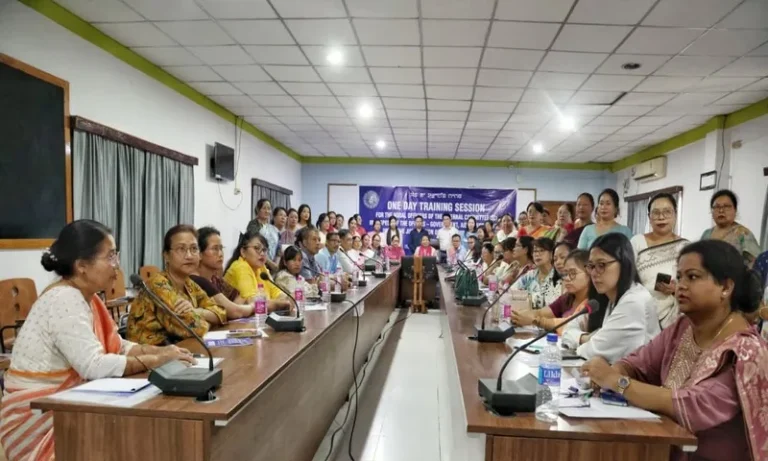PM Modi, Vladimir Putin, and Xi Jinping Showcase Unity at BRICS Summit Following India-China Border Agreement
Summary
At the recent BRICS Summit dinner, leaders of India, China, and Russia—PM Narendra Modi, Xi Jinping, and Vladimir Putin—demonstrated a united front. The cordial interactions followed a significant breakthrough in resolving the border dispute between India and China, signaling enhanced diplomatic relations. This summit not only highlighted BRICS’ collective strength but also reflected the potential for deeper cooperation despite previous tensions.
Full Article
Introduction: A Show of Unity at the BRICS Summit
When world leaders gather, especially those from powerful nations like India, China, and Russia, the spotlight naturally follows. But the recent BRICS Summit held a particular significance, as the event came in the wake of an important agreement between India and China over their long-standing border dispute. Amid global tensions and political complexities, seeing Indian Prime Minister Narendra Modi, Chinese President Xi Jinping, and Russian President Vladimir Putin interact in a spirit of unity sent a clear message: diplomacy is still alive and well, and cooperation between nations remains possible.
In this article, we’ll explore the key takeaways from the BRICS Summit, the importance of the India-China border resolution, and the wider geopolitical implications. Why does this matter on the world stage, and what does it mean for the future of BRICS? Let’s dive in.
What is BRICS and Why Does It Matter?
An Emerging Power Bloc
BRICS, an acronym for Brazil, Russia, India, China, and South Africa, represents a significant power bloc of emerging economies. Together, these nations account for around 40% of the world’s population and about 25% of global GDP. This group was originally founded to promote economic, political, and cultural cooperation among its member states, countering the dominance of traditional Western alliances like NATO and the G7.
But BRICS isn’t just an economic alliance; it also stands as a symbol of multipolarity in a world that is often viewed as being led by the West. With diverse interests, cultures, and political systems, the BRICS nations have proven that cooperation is possible even when there are differences in governance and ideology.
BRICS and Geopolitics
In terms of geopolitics, the importance of BRICS cannot be overstated. India and China alone make up about a third of the global population, and Russia’s influence as a nuclear power further enhances the group’s strategic significance. South Africa and Brazil contribute to representing the Global South, ensuring that discussions within BRICS reflect a wide range of perspectives.
BRICS offers an alternative platform where countries that may feel underrepresented in organizations like the United Nations can have a voice. With the world undergoing a period of geopolitical shifts—ranging from economic competition to military tensions—BRICS serves as a platform for dialogue and collaboration between emerging powers.
The India-China Border Issue: A Historic Resolution
Background on the Dispute
India and China share a long and contentious border, spanning over 3,440 kilometers. Disagreements over the exact demarcation of this boundary have led to several confrontations, the most recent of which occurred in the Galwan Valley in 2020. The clash resulted in casualties on both sides and heightened tensions between the two nuclear-armed nations.
Despite various rounds of talks and ceasefire agreements, the border issue remained unresolved for decades. However, the recent breakthrough in negotiations has paved the way for a reduction in military standoffs along the Line of Actual Control (LAC). This agreement marks a significant milestone in restoring peace between the two Asian giants.
The Importance of the Agreement
The border resolution between India and China sends a strong signal to the international community. It demonstrates that even the most entrenched disputes can be solved through diplomacy and dialogue. Both India and China have much to gain from maintaining peaceful relations, given their economic interdependence and regional influence.
The resolution also opens the door for future cooperation in areas such as trade, technology, and climate action. As two of the fastest-growing economies in the world, their ability to work together is crucial not only for regional stability but also for global progress on key issues.
BRICS Summit: A Stage for Diplomatic Engagement
Modi, Putin, and Xi: A United Front
At the BRICS Summit, much attention was focused on the interactions between Modi, Putin, and Xi. Despite recent geopolitical tensions, particularly between India and China, their cordial behavior at the summit suggested that both nations are committed to moving forward constructively. The agreement on the border dispute undoubtedly played a role in fostering a positive atmosphere during the event.
For Vladimir Putin, the summit provided a platform to reaffirm Russia’s role as a key global player despite the ongoing conflict in Ukraine. By aligning with India and China, Putin demonstrated that Russia still has powerful allies willing to engage with it diplomatically and economically.
Key Projects and Initiatives Discussed
One of the standout moments of the summit was the discussion of key projects and initiatives aimed at strengthening economic ties within BRICS. Leaders discussed everything from infrastructure projects to technology sharing, emphasizing the importance of collaboration in a rapidly changing world.
Energy security, food security, and health care also featured prominently on the summit’s agenda. With global supply chains still reeling from the effects of the COVID-19 pandemic, BRICS leaders emphasized the need to create more resilient and self-sustaining systems.
Geopolitical Implications
Strengthening Ties Amid Global Tensions
As the world grapples with the aftershocks of the pandemic, economic instability, and the rise of geopolitical rivalries, BRICS presents itself as an essential platform for diplomacy. The visible camaraderie between Modi, Xi, and Putin at the summit is a reminder that global cooperation is still possible, even when tensions exist.
This spirit of unity within BRICS contrasts sharply with the often divisive rhetoric seen in other international forums, where rivalry and competition tend to overshadow collaborative efforts. By showing a willingness to work together, the BRICS nations are sending a powerful message to the rest of the world: multilateralism is not dead, and there are still pathways to peace and prosperity.
India’s Role in BRICS
India’s role in BRICS has only grown stronger in recent years, especially with its expanding global influence. As the world’s largest democracy and a rising economic powerhouse, India’s voice carries significant weight in discussions on issues such as trade, climate change, and regional security.
For Modi, the summit was an opportunity to highlight India’s commitment to promoting peace and stability in the region. The resolution of the border issue with China further bolsters India’s reputation as a responsible and capable leader on the world stage.
Challenges Ahead for BRICS
Economic Disparities Among Members
While BRICS is a powerful bloc, it is not without its challenges. Economic disparities among the member states—particularly between the wealthier nations like China and the more developing ones like South Africa—can create friction. Ensuring that all members benefit equally from BRICS’ initiatives will be essential for the group’s long-term success.
Global Pressures
BRICS also faces external pressures from global powers like the United States and the European Union. These Western alliances may view the growing influence of BRICS as a threat to their own interests, leading to increased competition and potentially even attempts to undermine the bloc’s efforts.
However, if BRICS can continue to demonstrate unity and achieve tangible results—such as the successful resolution of the India-China border dispute—it will prove that it is a force to be reckoned with on the world stage.
Conclusion
The BRICS Summit highlighted the importance of unity and diplomacy in a world that is increasingly characterized by division. The resolution of the India-China border dispute and the visible camaraderie between Modi, Xi, and Putin at the event are clear examples of how nations can come together despite their differences. As BRICS continues to grow in influence, it will undoubtedly play a crucial role in shaping the future of global geopolitics.
FAQs
- What is BRICS?
- BRICS is a group of five emerging economies: Brazil, Russia, India, China, and South Africa, focused on economic cooperation and development.
- Why was the India-China border agreement significant?
- It marked a resolution to a long-standing dispute, reducing military tensions and promoting peace between the two nations.
- How does BRICS influence global geopolitics?
- BRICS represents a significant portion of the world’s population and economy, offering an alternative to Western-dominated alliances.
- What challenges does BRICS face?
- Economic disparities among members and external pressures from global powers pose challenges for the group.
- What role does eco-tourism play in Manipur’s conservation efforts?
- Eco-tourism helps raise awareness about wildlife conservation and provides economic benefits to local communities.




